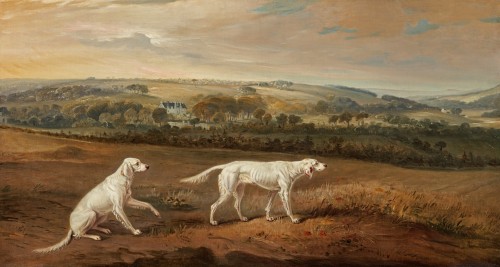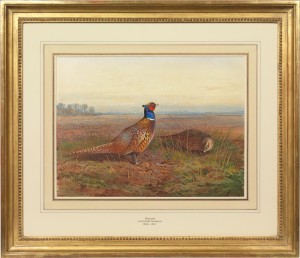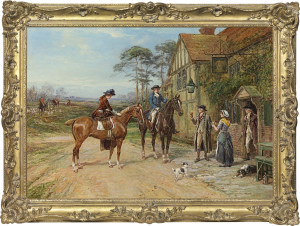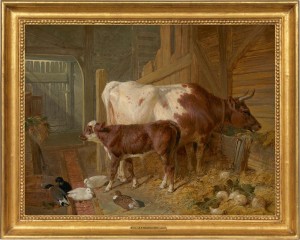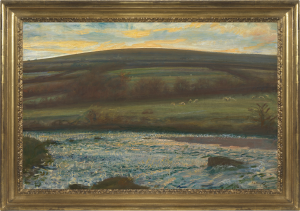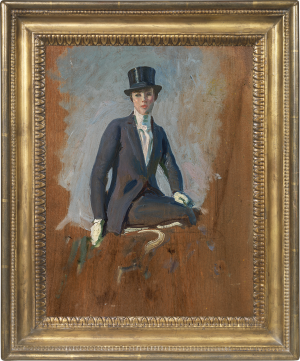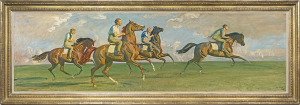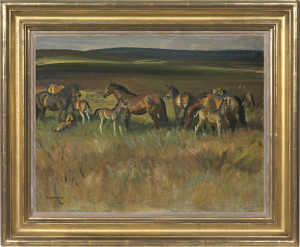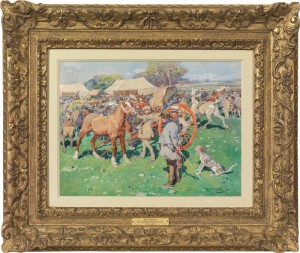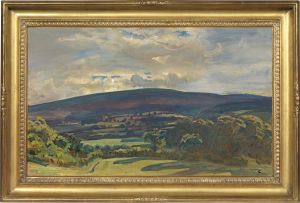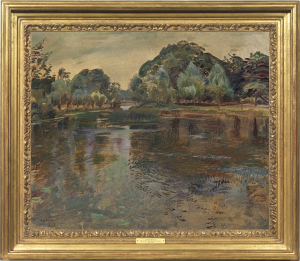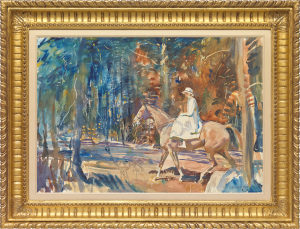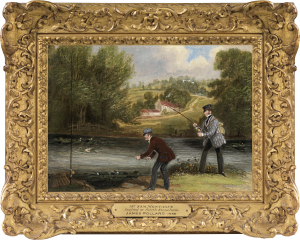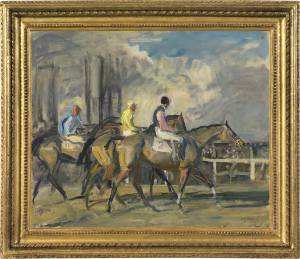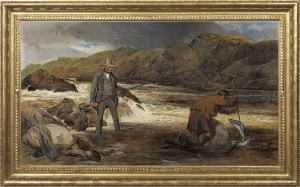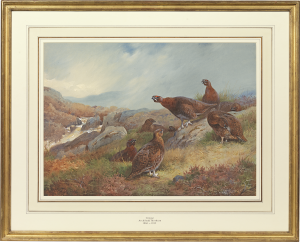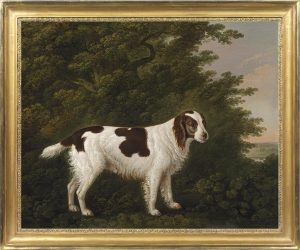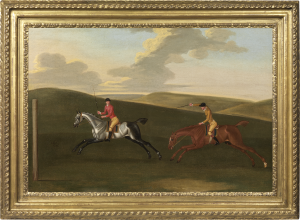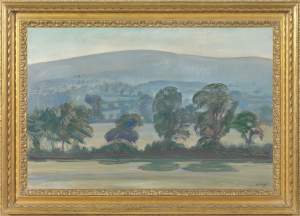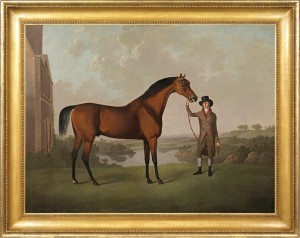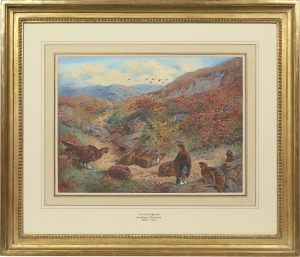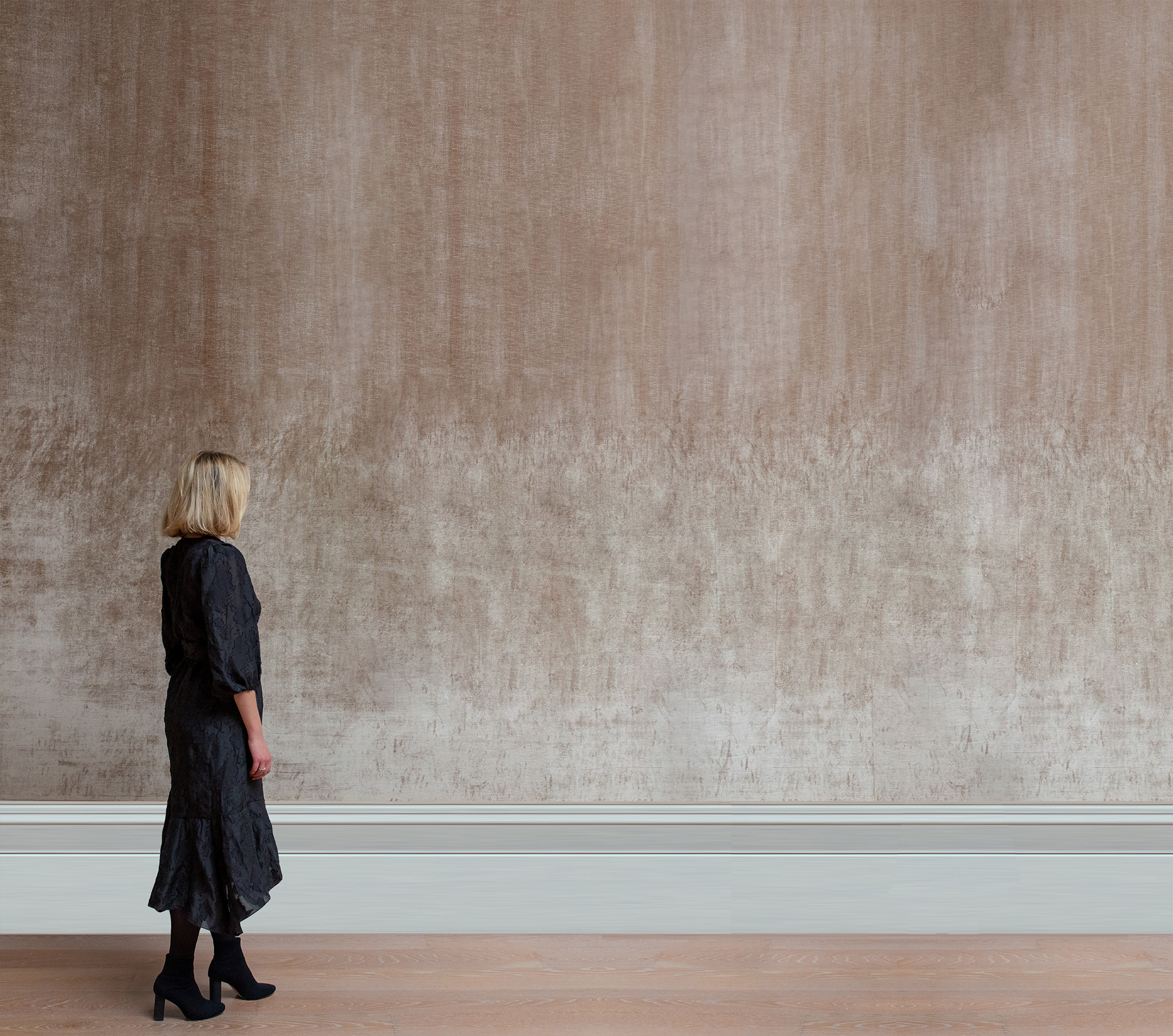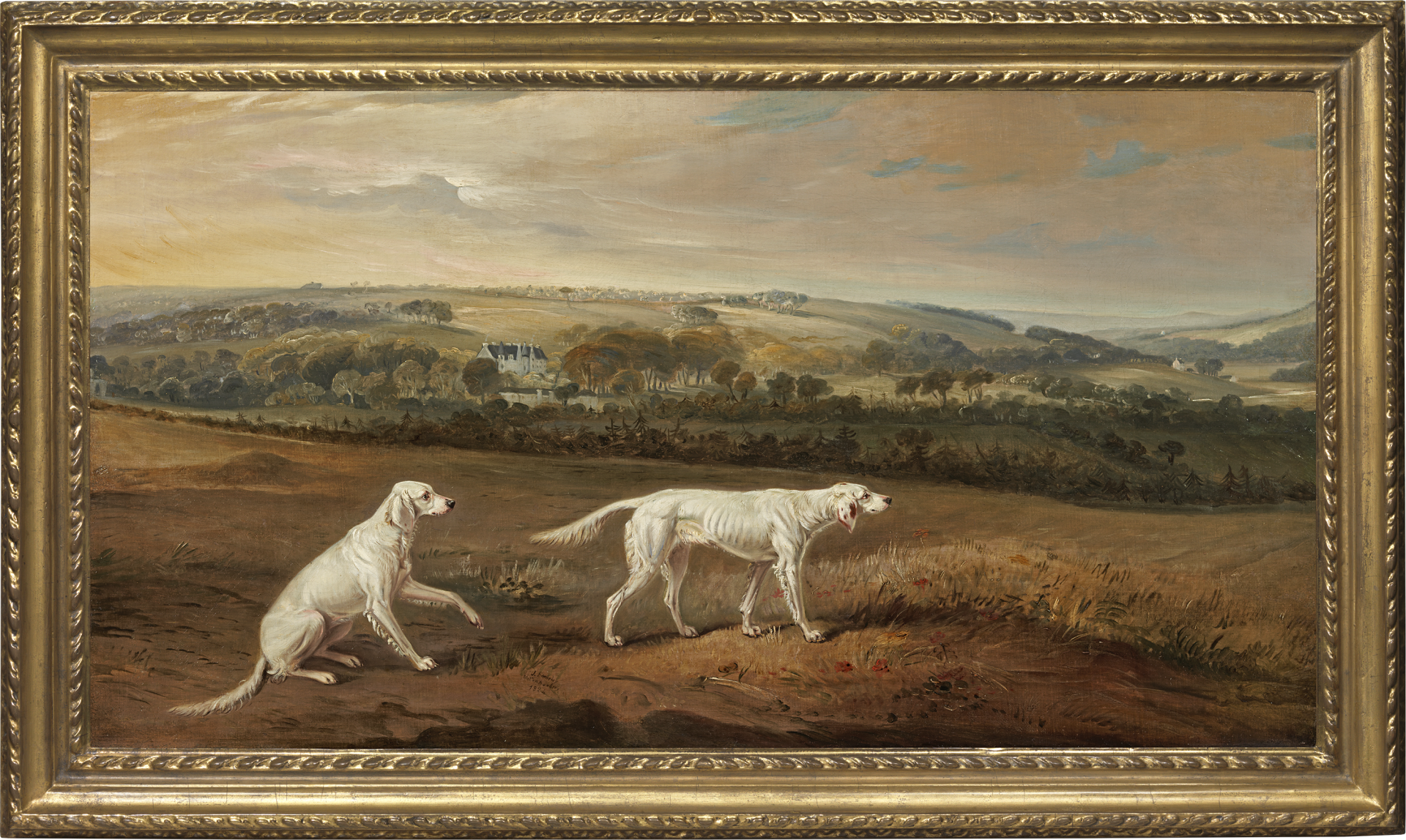John Ferneley Snr
Lord Kintore's English setters 'Blush' and 'Juno' in the park at Keith Hall, Aberdeenshire
Oil on canvas: 21.4 x 39 (in) / 54.3 x 99.1 (cm)
Signed, inscribed and dated 'Melton Mowbray, 1824 lower centre
This artwork is for sale.
Please contact us on: +44 (0)20 7493 3939.
Email us
JOHN FERNELEY SNR
Thrussington 1782 - 1860 Melton Mowbray
Ref: CA 204
Lord Kintore's English setters Blush and Juno in the park at Keith Hall, Aberdeenshire
Signed, inscribed and dated lower centre: J.Ferneley / Melton Mowbray / 1824
Oil on canvas: 21 ¼ x 39 in / 54 x 99.1 cm
Frame size: 26 ½ x 44 in / 67.3 x 111.8 cm
Provenance:
Anthony Adrian Keith-Falconer, 7th Earl of Kintore (1794-1844), Keith Hall, Aberdeenshire;
by descent
Literature:
Robert Fountain, John Ferneley (1782-1860) Catalogue of Paintings, p.14, British Sporting Art Trust reference no.D.24.000.006 (‘Two Setters, Blush and Juno with house in background’; online at bsat.co.uk)
The son of a wheelwright, John Ferneley was ‘discovered’ by the young Henry Manners, 5th Duke of Rutland (1778-1857), patron of the Belvoir Hunt, who saw him decorating a cart. The Duke encouraged him to study in London with Ben Marshall (1768-1835), launching him upon a successful career as a sporting painter.
By 1824 Ferneley was ensconced in a comfortable life at Elgin Lodge in Melton Mowbray, the town known as the Queen of the Shires at the confluence of four celebrated hunts: the Quorn, the Cottesmore, the Belvoir and the South Nottinghamshire. This painting is a fruit of his sojourn from September to December 1824 at Keith Hall, Inverurie with Anthony Keith-Falconer, 7th Earl of Kintore (1794-1844). The setters Blush and Juno, alive with excitement but perfectly controlled, have just scented a bird and are marking it for the gun to walk up. Behind them stretches the magnificent, rolling Aberdeenshire landscape, with the white walls and turrets of seventeenth century Keith Hall nestling among trees.
Ferneley’s weeks with Lord Kintore were described in a series of letters to his wife Sarah, with his inimitable spelling and punctuation[1]. He commented: ‘Keith Hall his a pleasant place an exilent house & well furnished’[2]. He shot roe deer and fished for salmon, while corralling sitters for The Meet of the Keith Hall foxhounds (private collection)[3], which featured Kintore on his favourite horse, Whitestockings, surrounded by hard-riding neighbours and friends. Ferneley also painted John Bouclitch, Lord Kintore’s Keeper, shooting roebuck at Keith Hall, 1824[4].
Lord Kintore brought his hounds south and was Master of the Old Berkshire Hunt from 1826 to 1830. ‘He was a rider bold to rashness, greedy for fences; and he was also celebrated as a boon table companion’[5]. When he gave up the country and returned to Keith Hall, he took to farming ‘on a large scale’[6].
Keith Hall, Inverurie, Aberdeenshire.
JOHN FERNELEY SNR
Thrussington 1782 - 1860 Melton Mowbray
One of the most accomplished sporting artists of his day, John Ferneley Snr had a long and prolific career, and enjoyed considerable fame and fortune during his lifetime. Born at Thrussington in Leicestershire, fifteen miles from Belvoir Castle, the son of a wheelwright, Ferneley was first apprenticed to his father’s trade. His artistic talent was recognised by the young Henry Manners, 5th Duke of Rutland (1778-1857), who admired some of his pictures adorning a cart on which his father was working. In 1801, at the instigation of the Duke, Ferneley was sent to London to study with the successful Leicestershire-born sporting painter Benjamin Marshall (1768-1835). Ferneley was supposed to enrol at the Royal Academy Schools, but never attended.
From 1804, Ferneley travelled extensively around England, visiting Dover (to paint the Leicestershire Yeomanry under the Duke’s patronage), Norfolk and Lincoln. He painted Thomas Assheton Smith (1776-1856), from 1806 Master of the Quorn, in whose country Thrussington lay. In 1809 he went to Ireland, returning in 1810 and 1812, painting many pictures for the Irish gentry.
Ferneley married Sarah (Sally) Kettle in 1809; by 1811 he was earning over £200 a year. In 1814 he built a studio and house named Elgin Lodge at Melton Mowbray in Leicestershire, the town known as ‘the Queen of the Shires’ at the confluence of four famous hunts: the Quorn, the Cottesmore, the Belvoir and the South Nottinghamshire. His reputation earned him the patronage and friendship of many Meltonians and members of the aristocracy. He was commissioned by some of the most fashionable figures of the day, including Beau Brummel and Count d’Orsay. Ferneley was an enthusiastic practitioner of the field sports which he painted, keeping his own hunter and enjoying fishing, shooting, stalking and yachting. In 1810 he increased his charge for painting a single horse from five guineas to ten, keeping this rate for the rest of his career. Ferneley painted racing, shooting, stalking, horse and cattle fairs and portraits of dogs and farm animals. He is most celebrated, however, for hunting portraits. His immaculately turned-out gentlemen and elegant mounts epitomize the era of reckless bravery and high fashion on the hunting field. He excelled at the ‘hunt scurry’, panoramic works which depict ‘a number of identifiable riders galloping at splittercokation pace across the large, recently enclosed, pastures of the Midlands’[7].
Ferneley made annual visits to London and periodic visits to Scotland, Yorkshire and elsewhere in England. He exhibited at the Royal Academy between 1806 and 1853, as well as at the British Institution and Suffolk Street. Three of his children, Sarah (1811-1903), a watercolourist, John Jnr (1814-1862) and Claude Lorraine (1822-1891) became artists. He also taught Sir Francis Grant (1803-1878). John Ferneley Snr died in Melton Mowbray in 1860.
The work of John Ferneley Snr is represented in Leicester Art Gallery; Burghley House, Lincolnshire; Tate Britain, London; the Walker Art Gallery, Liverpool and the Yale Center for British Art, New Haven, CT.
[1] Guy Paget, The Melton Mowbray of John Ferneley (1782-1860), Leicester 1931, pp.45-49.
[2] Letter of 28th August 1824; Paget, op. cit., p.46.
[3] Paget, ibid., illus. opposite p.48.
[4] Paget, illus. opposite p.50.
[5] FC Loder-Symonds, A History of the Old Berks Hunt from 1760 to 1904, 1905, Chapter 6.
[6] Loder-Symonds, op. cit., p.102.
[7] Robert Fountain, ‘Ferneley, John (1782-1860), Oxford Dictionary of National Biography, Oxford 2004.

